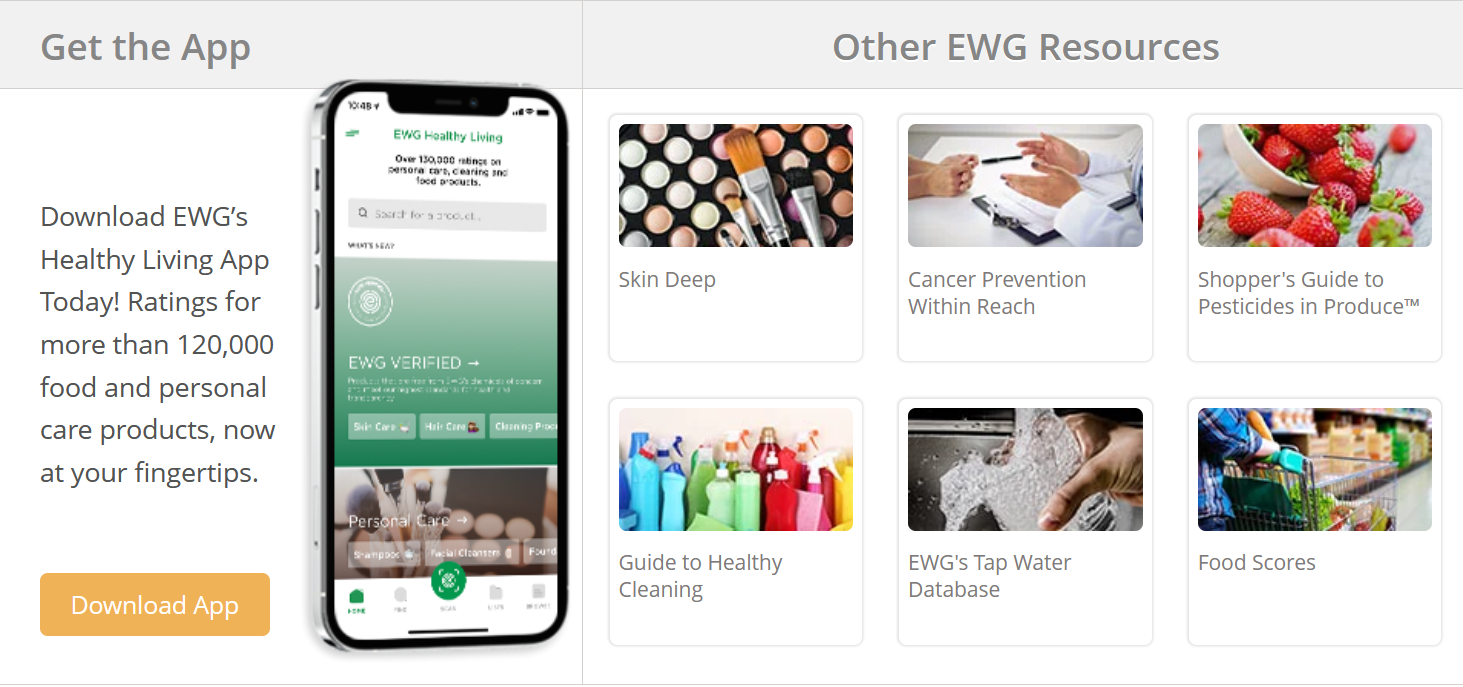The Old Saying You Are What You Eat Has Never Been More Accurate Then Now!
More than 70 percent of non-organic fresh produce sold in the U.S. contains residues of potentially harmful pesticides, EWG’s 2022 Shopper’s Guide to Pesticides in Produce™ finds.
This year’s version of the guide, which analyzes the latest test data from the Department of Agriculture and Food and Drug Administration, also reveals that over 50 percent of potatoes, spinach, lettuce and eggplant had detectable levels of at least one of three bee-killing neonic insecticides banned in the European Union but still allowed for use on U.S. produce.
A critical part of a healthy diet includes a combination of fruits and vegetables, regardless of how they are grown. But anyone worried about consuming potentially harmful pesticides should know that many are found on many fruits and vegetables, even after they are washed, peeled or scrubbed, which the USDA does before testing.
The goal of EWG’s Shopper’s Guide to Pesticides in Produce, released every year since 2004, is to educate the public about fruits and vegetables with the highest and lowest pesticide residues so consumers can make the best decisions for their families.
The guide includes EWG’s Dirty Dozen™ and the Clean Fifteen™, two lists that provide a quick consumer reference about the most and least contaminated produce.
Numerous peer-reviewed scientific studies have shown that consuming produce high in pesticide residue, like the items on our Dirty Dozen list, increases the risk of certain negative health impacts, and that choosing organic can almost immediately reduce the amounts of residues in a person’s body.
Recent research from Harvard University shows that consuming fruits and vegetables with high levels of pesticide residues may decrease the beneficial effects of fruit and vegetable consumption, including protection against cardiovascular disease and mortality.
EWG’s 2022 Shopper’s Guide to Pesticides in Produce combines data from USDA and FDA tests from 2020 and nine years earlier, with the exception of pineapple data, which is from 2002. The newest data released by the agencies included results of tests of nearly 45,000 samples of produce. The USDA does not test every type of produce every year.
The USDA also does not test fruits and vegetables for all pesticides used in crop production. For example, glyphosate is the most heavily used pesticide in the U.S., and it can be found in high levels on several grains and beans, such as oats and chickpeas. But the USDA has not analyzed these crops for glyphosate. This is troubling, because tests commissioned by EWG found almost three-fourths of popular oat-based food samples, including many popular with children, had pesticide residue levels higher than what EWG scientists consider protective of children’s health.
Read more here about EWG’s research into glyphosate on these foods.
New findings
As in previous years, several pepper samples contain concerning levels of pesticides that can harm the nervous system, including oxamyl, acephate and chlorpyrifos – carbamate and organophosphate insecticides banned from use on some U.S. crops and entirely in the EU.
Last year, the Environmental Protection Agency moved ahead with a long overdue ban of chlorpyrifos on food crops. Any future detections of chlorpyrifos will indicate uses that violate this ban.
This year we removed three vegetables from the Clean Fifteen: broccoli, cauliflower and eggplant. That’s because they hadn’t been tested by the USDA in six, seven and 14 years, respectively
As a result, mangoes, watermelon and sweet potatoes were added to the Clean Fifteen.
Read The Rest At: https://www.ewg.org/foodnews/summary.php

About EWG’s Shopper’s Guide to Pesticides in Produce™
EWG’s Shopper’s Guide to Pesticides in Produce™, updated every year since 2004, ranks the pesticide contamination of 46 popular fruits and vegetables. The guide is based on test results by the Department of Agriculture and the Food and Drug Administration of around 45,000 samples of produce. It is important to note that the samples are tested for pesticides after they have been prepared to be eaten. This means the produce has been thoroughly washed and, when applicable, peeled. After these preparations, pesticide residues are still detected on many of the fruits and veggies.
Every day, consumers rely on EWG’s Shopper’s Guide to help them make the best choices for their families and reduce their exposures to toxic pesticides.
EWG’s groundbreaking work on pesticide policy
Since its inception, in 1993, EWG has fought for consumers’ right to live healthier lives in a healthier environment.
EWG’s very first report, in 1993, “Pesticides in Children’s Foods,” played a pivotal role in Congress’ passage of the Food Quality Protection Act, two years later. The law gave the Environmental Protection Agency the regulatory authority to ensure the pesticides used in our food system do not harm our most vulnerable populations – infants and children. Subsequent EWG research found carcinogenic pesticides in baby food and weedkillers in Midwestern tap water.
EWG is proud to have played a role in this landmark legislation, but our work is far from done.
Conventional agriculture continues to use large quantities of toxic pesticides. As a result, USDA researchers detect pesticide residues on much of the fruits and vegetables they test. This is why EWG updates our Shopper’s Guide each year. As long as these chemicals remain in use and turn up on produce, we’ll keep publishing the Shopper’s Guide and investigating pesticides and other chemicals that can harm health, especially the health of children.
Expert testimony
The American Academy of Pediatrics
The American Academy of Pediatrics recommends the Shopper’s Guide to pediatricians consulting with parents about reducing pesticide exposures in their children’s diets.
Dr. Philip Landrigan
“Infants, babies and young children are exquisitely vulnerable to even low levels of pesticide exposure, so it’s important parents and caregivers take steps to safeguard children from these chemicals while also providing them diets rich in healthy fruits and vegetables.
“For many Americans, choosing an all-organic diet is not possible, so using EWG’s guide can help give consumers the tools to provide their families with a mix of both conventional and organic fruits and veggies without the pesticide punch.”
Dr. Philip Landrigan is director of the Program in Global Public Health and the Common Good in the Schiller Institute for Integrated Science and Society at Boston College, a member of the National Academy of Medicine and one of the principal authors of the 1993 National Academy of Sciences study “Pesticides in the Diets of Infants and Children.” The study led to the enactment of the 1996 Food Quality Protection Act, which emphasized the importance of children’s health in the setting of safety standards for pesticides on foods.
Dr. Chensheng (Alex) Lu
“Research that I and others have conducted clearly shows children can dramatically reduce the levels of pesticides in their bodies by eating organic fruits and veggies, or those conventional versions that regularly have far fewer pesticide residues. However, when an all-organic diet is not an option, one way to give children a healthy diet with plenty of fresh produce is to consult EWG’s Shopper’s Guide. This guide helps parents to choose between organic and conventional options at the grocery store.”
Dr. Chensheng (Alex) Lu is a nationally recognized professor at the Harvard T.H. Chan School of Public Health. He has conducted numerous studies on the impact of pesticide exposure through diet on people, including children.
Dr. Andrew Weil
“I am pleased to have an ongoing partnership with EWG, a nonprofit organization that advocates for policies that protect global and individual health. Specifically, I am honored to help EWG spread the word about one of its most valuable pieces of research – the Shopper’s Guide to Pesticides in Produce.”
Dr. Andrew Weil is a renowned medical expert on natural health and wellness, and founder and director of the Arizona Center for Integrative Medicine at the University of Arizona.
Laurie David
“EWG’s Shopper’s Guide to Pesticides in Produce recognizes that many people who want to reduce their exposure to pesticides in produce cannot find or afford an all-organic diet. It helps them seek out conventionally grown fruits and vegetables that tend to test low for pesticide residues. When they want foods whose conventional versions test high for pesticides, they can make an effort to locate organic versions.”
Laurie David is an environmental advocate and board member of the Natural Resources Defense Council. She produced the Academy Award–winning documentary “An Inconvenient Truth” and the film “Fed Up,” about the obesity epidemic in the U.S.
Kris Carr
“Even if it’s not every time you get groceries, each organic purchase is a vote for better health and policies. The Environmental Working Group has a handy guide to the most chemical-heavy fruits and vegetables, the Dirty Dozen™, and the least, the Clean Fifteen™, when these foods are grown conventionally.”
Kris Carr is a New York Times best-selling author, speaker, and health and wellness advocate and a cancer thriver. She directed the well-received documentary, “Crazy Sexy Cancer” about her own battle with the disease.
Marion Nestle
“If you want to avoid eating pesticides, you can stick with the EWG Clean Fifteen. Washing produce before eating it is always a good idea even if it doesn’t get rid of all of the chemicals – USDA studies are done on washed produce. When in doubt, buy organic.”
Marion Nestle is the Paulette Goddard Professor of Nutrition, Food Studies, and Public Health at New York University. She is a noted expert in the area of food policy and the award-winning author of numerous books on food and food policy.
Mark Bittman
“If I were of child-rearing age now, or the parent of young children, I would make every effort to buy organic food. If I couldn’t do that, I would rely on the Environmental Working Group’s Guide to Pesticides in Produce. Their Dirty Dozen lists those fruits and vegetables with the highest pesticide residues, and their Clean Fifteen notes those that are lowest. But regardless of age, we need to stay awake and remember that the dangers of pesticides are as real now as they were half a century ago.”
Mark Bittman is a nationally recognized authority in the area of food, a former columnist for The New York Times and the author of more than a dozen cookbooks, including the bestselling “How to Cook Everything.”
Dr. Mark Hyman
“Eat organic whenever you can. Follow the Environmental Working Group’s list of Dirty Dozen and Clean Fifteen to identify the worst and least contaminated fruits and vegetables.”
Dr. Mark Hyman has dedicated his career to identifying and addressing the root causes of chronic illness through a groundbreaking, whole-systems approach known as functional medicine. A family physician and five-time No. 1 New York Times bestselling author, he is an internationally recognized leader, speaker, educator and advocate in his field. He sits on EWG’s board of directors.





0 Comments